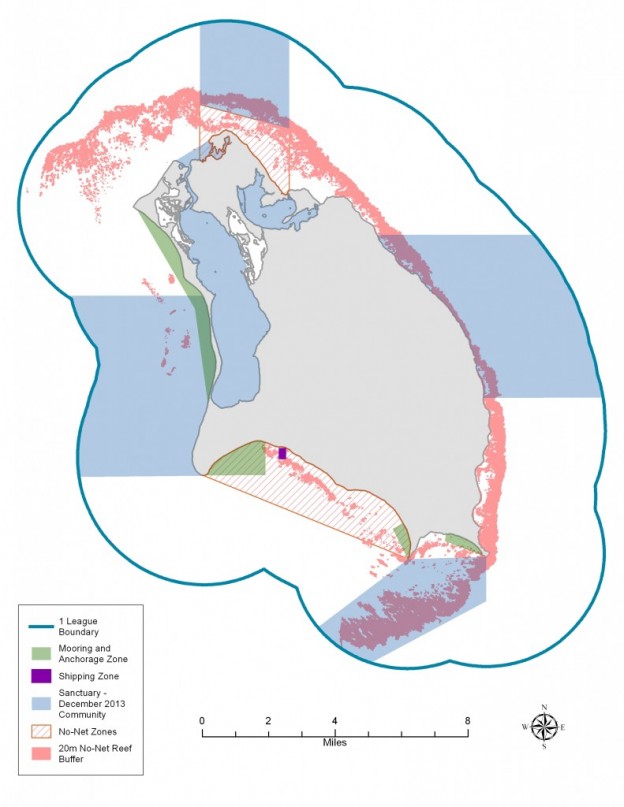BY KELLY COX- Home to some of the world’s most diverse underwater ecosystems, the Caribbean has seen the quality of their marine resources decline over the years [1]. Threats to marine resources are commonplace as the region sees the increased adverse effects of climate change, tourism, pollution, overfishing, coastal development and disease in marine species [2]. The region has seen coral populations decline by more than 50% since 1970, leaving only one-sixth of the original coral cover to generate the US $3 billion annually from tourism, fisheries, and other goods and services derived from marine resources [3]. In an effort to return these unique marine ecosystems to their former grandeur, the small island nation of Barbuda is leading the Caribbean with landmark marine conservation legislation [4]. Barbuda, in partnership with the Waitt Institute, conducted a two-year preliminary study which included input from the local fishing community, scientists, and the general public. This community engagement strategy, also known as the Barbuda Blue Halo Initiative, sought to establish a coastal zone map of the island’s territorial waters, create new fisheries management regulations, and frame plans for monitoring, enforcing, and financing the project in order to ensure its sustainability [5].
On August 12, 2014, Barbuda’s governing council passed several marine conservation regulations and created new marine ‘zones’ within an area designated the ‘Blue Halo’. These new ocean management regulations created five marine sanctuaries which serve to protect one-third of the coastal area [6]. The regulations also completely prohibit the harvest of parrotfish or sea urchins, organisms that are essential to reef prosperity and health [7]. This new legislation also makes fishing nets illegal within 65 feet of a coral reef and creates a two-year moratorium on fishing in the critical Codrington Lagoon habitat, a vital marine nursery for Barbudan fisheries [8]. The strategies laid out in these regulations are scheduled for implementation in 2015 are the strictest of their kind in the region [9]. The new standards were approved with a conservation ethic in mind in order to promote the recovery of fish populations, coral reef habitat, and the local economy [10].
The thirteen new coastal zones within Barbuda’s Blue Halo are confined to a 1 league (3.45 mile) perimeter and are classified as sanctuary, no-net, anchoring, or lagoon zones [11]. The regulations identify government authorities to oversee implementation and enforcement of the new laws including requiring mandatory permits to fish in Barbuda’s coastal waters, to alter or remove mangroves or seagrass, and to implement artificial reefs [12]. The regulations strictly limit shark fishing to traditional uses, prohibit fishing on any fish spawning aggregation, require escape gaps for by-catch in lobster and fish traps, forbid fishing on artificial reefs, and establish a Coastal Management Advisory Committee and Parks Authority [13].
Barbuda’s landmark ocean management regulations will surely be transformative in the region by creating a new standard for the conservation of critical marine resources. Other countries, such as Bermuda, are currently working toward creating Blue Halo’s of their own [14]. If the Caribbean hopes to see the health of their marine resources turn around, regulatory initiatives such as Barbuda’s Blue Halo must become the norm [15]. Multi-lateral agreements and integrated ocean management techniques, such as those recommended at the 2013 International Coral Reef Initiative meeting in Belize, must be adopted and implemented throughout the Caribbean in order for the region to experience revitalization of their coral reefs, fishery stocks, and tourism economy [16]. While the small island nation of Barbuda is making large strides in the area of ocean management, regional adoption of similarly stringent laws would ensure the preservation of these valuable economic and environmental resources for generations to come.





